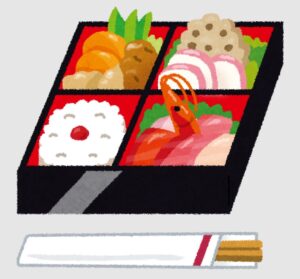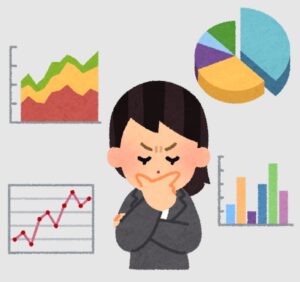「この5つだけ|為替リスクを知り、利益を手に入れよう!」
~前回のつづき~
●外貨預金
海外の預金です。
要は日本の円以外の外貨。
外貨の預金のことを
全部まとめて外貨預金と言います。
日本の銀行の金利は
0.001%ですが
外貨預金は
もちろん銀行によりますが
| 米ドル | 2% |
| ユーロ | 0.5% |
| トルコリラ | 15% |
| 豪ドル | 2% |
| 南アフリカランド | 6% |
金利は常に変動します。
昔日本でも定期預金の金利が
8%の時代もありました。
●預金の特徴
日本じゃ増えません。
外貨預金は為替の影響を受けます。
トルコリラであれば15%。
100万円預けたら
来年金利がついて
115万円になる計算です。
すごいですよね?
でもそう簡単にはいきません。
外貨預金というのは
為替の影響を受けます。
円高・円安という言葉は
聞いたことがあると思います。
お金・円の価値というのは
常に変動しています。
1ドル100円だったのが
1ドル98円になったらこれは
円高でしょうか円安でしょうか?
・
・
・
・
・
・
・
・
・
・
これは円高です。
なぜかというと
1ドル100円が
1ドル98円になったという事は
1ドル買うのに
100円必要だったのが
1ドル買うのに
98円で買えるようになった。
だから円高ですよね?
逆に1ドル100円のものが
1ドル102円になったら
これは円安です。
最初戸惑うかもしれませんが
為替の世界はこれから出てきます。
一年にこのトルコリラの価格が
一年後に全く変わってなかったら
15%で増えますが
大体このような高金利の通貨というのは
値動きがすごく激しい。
米ドルであれば
そこまで大きく変わらないのですが
小さい国の通貨は
それだけリスクもあるので
なかなかそう簡単にはいかない。
だから外貨預金というのは
よく銀行等が3〜4%とか
押し出したりしてますが
この為替の影響を受けます。
それから為替。
円をドルに変えるとか
円をトルコリラに銀行で変える時には
手数料がすごく高いです。
だからそこでも
手数料ですごく儲けられるので
銀行は薦めてくるんです。
●その他
・仮想通貨
(ビットコイン、イーサリアム、リップルなど)
特徴は語り出したらキリがない。
現状メインの投資先ではないので
割愛します。
また仮想通貨にも触れていきたいですが
今語ることではないので
ザックリこういうものもある。
・ソーシャルレンディング
・アンティークコイン
いくつかありますが
メインの投資先にはならないかと思います。
ザックリこういうものがある。
●金融商品一覧
結構たくさんあるように思えますが
振り返ると結局
・株
・債券
・不動産
・コモディティ
・預金
これしかないんです。
全ての金融商品は
この中に分類されます。
いろんな投資が
いっぱいあるように
思われがちです。
いっぱい有りますが
みんなこの5つのカテゴリーに
ほぼ全ての金融商品というのは分類されます。
だから
この5つだけ覚えておけば大丈夫です。
ここだけ覚えておいて
特徴は各商品の特徴だけ覚えておけば
今後困る事はないでしょう。
そんなに
理解に苦しむ事はないと思います。
1つ1つイメージが湧くと思うので
そんなに難しくないと思います。
とりあえず商品一覧で
覚えていただければ大丈夫です。
●まとめ
◆株とは?
→企業を買うという事そのもの
◆株の特徴
→(1)流動性がある
(2)何もしなくていい
(3)値段が上下する
(4)配当金が出る
(5)税金が最大で20%
◆他の投資商品
→債権には3種類ある
(1)国債
(2)社債
(3)地方債
◆債権と株の違い
→債権は借用書
(1)満期保有すれば額面金額を受け取れる
(2)利息を受け取れる
(3)価格が上下する
(4)流動性がある
(5)何もしなくていい
(6)ローリスク・ローリターン
◆不動産
→いっぱいある
(1)住居(レジデンス系)
(2)テナント
(3)宿泊系
(4)太陽光発電
◆不動産の特徴
→イメージがわきやすい
(1)毎月家賃が受け取れる
(2)インフレに強い
(3)流動性が低い
(4)銀行融資が使える(レバレッジ)
(5)うまく使えば税金のコントロールが出来る
(6)他の投資に比べて手間がかかる
(7)投資資金は500万円〜
◆コモディティ
→金やプラチナ(ほぼ金)
(1)世界中で価値が共通
(2)利息や配当は出ない
(3)不況時に強い
◆現金預金
→これも一つの投資商品
金利が低い
◆外貨預金
→海外の預金
◆預金の特徴
→為替の影響を受ける
◆その他
→メインの投資先にはならない
(1)暗号資産(ビットコイン、イーサリアム、リップルなど)
(2)ソーシャルレンディング
(3)アンティークコイン
◆金融商品一覧
→この5つだけ覚えておけば大丈夫
(1)株
(2)債権
(3)不動産
(4)コモディティ
(5)預金
Special Thanks college president Ryo.

●おまけ
≪≪perplexityちゃんによる文章まとめ≫≫
外貨預金は、円以外の外国通貨で預金する金融商品です。
日本の預金金利が非常に低いのに対し、米ドルやトルコリラなどの外貨預金は比較的高い金利が魅力ですが、為替レートの変動リスクがあり、元本割れの可能性もあります。
また、為替手数料が高めに設定されているため、実際の利回りが目減りする点にも注意が必要です。
金融商品には多様な種類があるように思えますが、実際は「株」「債券」「不動産」「コモディティ」「預金」の5つに分類されます。
まずはこの基本を押さえ、それぞれの特徴やリスクを理解することが大切です。
仮想通貨やソーシャルレンディングなどは補助的な商品として捉えると良いでしょう。
- https://www.bk.mufg.jp/tameru/gaika/column/002/index.html
- https://www.jibunbank.co.jp/column/article/00363/
- https://www.resonabank.co.jp/kojin/column/gaika/column_0001.html
- https://www.tsukubabank.co.jp/individual/increase/foreign.html
- https://www.hokuyobank.co.jp/person/deposit/gaika/beginner/risk.html
- https://www.smbc.co.jp/kojin/money-viva/gaikayokin/0001/
- https://www.smbctb.co.jp/product/foreigncurrency/
- https://www.aeonbank.co.jp/foreign_deposit/beginner/risk/
- https://www.fukuokabank.co.jp/personal/service/gaikayokin/lineup/super/
≪≪Chat-GPTくんによる英訳≫≫
~Continuing from the previous part~
【Foreign Currency Deposits】
These are deposits held in overseas currencies.
In short, it’s money deposited in currencies other than the Japanese yen.
All such deposits are collectively called foreign currency deposits.
In Japan, bank interest rates are around 0.001%,
but for foreign currencies (depending on the bank), rates are for example:
USD: 2%
EUR: 0.5%
Turkish Lira: 15%
AUD: 2%
South African Rand: 6%
Interest rates are constantly changing.
There was even a time in Japan when fixed deposit interest rates were 8%.
—
【Characteristics of Deposits】
In Japan, your money won’t grow much.
Foreign currency deposits are affected by exchange rates.
For example, Turkish Lira offers 15%.
So if you deposit 1 million yen,
you’ll receive 1.15 million yen next year including interest—
Sounds great, right?
But it’s not that simple.
Foreign currency deposits are impacted by currency fluctuations.
You’ve probably heard of yen appreciation and yen depreciation.
The value of money (yen) is always changing.
If 1 USD was 100 yen, and it becomes 98 yen—
is that yen appreciation or depreciation?
…
…
…
That’s yen appreciation.
Why? Because before it took 100 yen to buy 1 USD,
but now you can get 1 USD with just 98 yen.
So the yen has become stronger (yen appreciation).
Conversely, if 1 USD becomes 102 yen,
that would be yen depreciation (yen has weakened).
You might be confused at first,
but this is essential in the world of foreign exchange.
If the value of the Turkish Lira stays exactly the same after a year,
you’d get the full 15% return.
However, high-interest currencies tend to fluctuate wildly.
The US dollar, for example, doesn’t change as much.
But currencies from smaller countries carry more risk,
so it’s not as easy as it looks.
That’s why banks often promote foreign currency deposits
with 3–4% interest,
but they come with exchange rate risk.
Also, about foreign exchange—
When you exchange yen for dollars or Turkish Lira at the bank,
the fees are extremely high.
Banks make a lot of profit from these fees,
which is why they actively promote these products.
—
【Others】
Cryptocurrencies (Bitcoin, Ethereum, Ripple, etc.)
They have a lot of unique characteristics,
but we’ll skip them for now as they’re not a major investment option at this time.
We’ll revisit cryptocurrencies another time.
Just know that they exist.
Social Lending
Antique Coins
There are several options,
but they’re not considered main investment categories.
Just keep in mind that these exist.
—
【List of Financial Products】
At first glance, it may seem like there are many financial products,
but in the end, they all boil down to:
Stocks
Bonds
Real Estate
Commodities
Deposits
That’s it.
All financial products fall under one of these five categories.
There seem to be many investment types,
but almost everything can be classified into these five categories.
So if you just remember these five, you’re good.
Then, just learn the characteristics of each product type,
and you’ll be fine going forward.
It’s not that hard to understand.
Once you grasp the concept of each one, it becomes easier to visualize.
It’s not as complicated as it may seem.
Just start by memorizing this list of products.
—
【Summary】
◆ What are Stocks?
→ You’re essentially buying a company.
◆ Features of Stocks:
1. Highly liquid
2. No effort required after purchase
3. Price fluctuates
4. You receive dividends
5. Tax is up to 20%
—
◆ Other Investment Products:
There are three types of bonds:
1. Government Bonds
2. Corporate Bonds
3. Municipal Bonds
—
◆ Difference Between Bonds and Stocks:
→ Bonds are IOUs (loan agreements)
1. If held to maturity, you receive the face value
2. You earn interest
3. Prices can fluctuate
4. Liquid to some extent
5. No effort required after purchase
6. Low risk, low return
—
◆ Real Estate
There are many types:
1. Residential properties
2. Commercial tenants
3. Hospitality (hotels, etc.)
4. Solar power investments
—
◆ Features of Real Estate:
→ Easy to visualize
1. Monthly rental income
2. Strong against inflation
3. Low liquidity
4. Bank loans available (leverage)
5. Potential for tax control
6. More hands-on than other investments
7. Requires at least 5 million yen to start
—
◆ Commodities
→ Gold, platinum (mainly gold)
1. Universally valued across the world
2. No interest or dividends
3. Strong during economic downturns
—
◆ Cash Deposits
→ Also considered an investment product
Very low interest rates
—
◆ Foreign Currency Deposits
→ Deposits held in foreign currencies
Subject to exchange rate fluctuations
—
◆ Others (not main investment options)
1. Crypto assets (Bitcoin, Ethereum, Ripple, etc.)
2. Social Lending
3. Antique Coins
—
◆ Financial Product Categories
→ Just remember these five:
1. Stocks
2. Bonds
3. Real Estate
4. Commodities
5. Deposits
Special Thanks OpenAI and Perplexity AI, Inc








